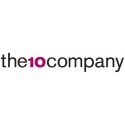Is Your Vision Statement Visionary? 10 Essentials for an Effective Vision Statement
Some of the most sophisticated corporations lose their way when crafting a meaningful vision. Even worse, some don’t appreciate their importance. According to Harvard Business Review, “up to 70 percent of employees do not understand their company’s strategy.” The right vision statement becomes short-hand for a company’s strategy…and can also communicate a compelling social purpose. Ultimately, it’s a unifying call to action.
Here are 10 essential elements to ensure a vision statement actually demonstrates vision.
1. Don’t confuse a vision statement with a mission statement. A vision statement is an aspirational declaration about your company’s mid to long term goals. It helps guide strategy and answers the question, “What challenges do you hope to solve in the next few years?” A mission statement is your company’s reason for being today…what do you do now?
2. Make it inspirational. Motivate employees. It should be outward focused, not boastful and not based on internal goals. We helped Raytheon evolve its vision statement from “To be the most admired Aerospace and Defense Systems company through our world-class people, innovation and technology” to “One global team creating trusted, innovative solutions to make the world a safer place.”
3. Keep it short. Think of it in terms of an “elevator speech.” Everyone should be able to remember it. Google’s vision statement is a good example: “To organize the world’s information and make it universally accessible and useful.”
4. Paint a picture of the future. Reflect current strategy, but also set the stage for what’s coming. DuPont’s vision statement reads, “To be the world’s most dynamic science company, creating sustainable solutions essential to a better, safer and healthier life for people everywhere.”
5. Use relatable language. Avoid corporate-speak. Clear, concise language is best. And, if you are operating globally, make sure it translates well. Keep it simple…something all audiences can understand easily…even your next door neighbor. Fannie Mae’s vision is “to be America’s most valued housing partner.”
6. Be aspirational, but realistic. While the best vision statements reflect big thinking and are emotive, they also reflect achievable goals. If you are a pharma company, you may very well be able to eradicate cancer, but if you are an appliance manufacturer probably not.
7. Make it meaningful for all audiences. Resonate with all audiences…employees as well as potential employees, shareholders, customers, community and government officials. Here’s Tesla’s: "To accelerate the world’s transition to electric mobility with a full range of increasingly affordable electric cars.”
8. Differentiate. Be unique and not generic. You should not be able to insert your competitor’s name and have it ring true.
9. Back it with action. Don’t just put it on the wall of your corporate headquarters. Have a robust communications plan to promote your vision statement. Most importantly, support it with values and specific ways to work that leaders and employees live every day.
10. Revisit every five years or so. It’s not a once and done exercise. Like a good company, a vision statement should evolve to reflect growth and change. While you don’t want to change your vision statement every year or two, it’s appropriate to update and revise it periodically to make sure it continues to be relevant and forward thinking.
